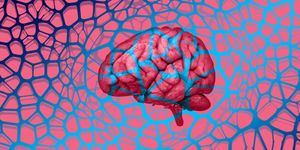MIT researchers recently published a study in Brain Sciences that sheds light on neurocognitive functioning. In particular, the findings could have positive implications for treating memory decline. They discovered a key brain circuit in the anterior thalamus that plays a pivotal role in working memory, and specifically spatial memory. In a study using a mouse model, researchers identified this circuit as effective in navigating a maze. They also found that this circuit’s effectiveness weakens with age. However, enhancing the circuit’s activity improved the older mice’s ability to navigate the maze.
The anterior thalamus is one brain region associated with memory. In particular, the thalamus is responsible for spatial memory. Spatial memory and recall are important for efficiently navigating surroundings, and this tends to be a common challenge for those living with neurodegenerative diseases.
Researchers are still exploring what each brain structure does, but there is growing evidence that the thalamus plays a critical role in several functions. It is located in the center of the brain, and it is involved in many executive cognitive functions such as planning, and it regulates emotions associated with learning and memory tasks. It acts as a relay station or communication bridge between the cortex and rest of the body. The thalamus also affects attention. For example, it regulates focus during moments of attention overload. It acts as a sensory filter to reprioritize certain situational elements over distractors. The thalamus plays a role in changes of consciousness and whether you are sleepy, alert, or groggy. It is involved in sensory pathways involving audio, sensory, visual, and gustatory pathways to the brain. The thalamus regulates some of the emotional aspects of learning and memory.
The discovery of this circuit’s role has implications for drug discovery, cognitive therapy, and learning and puts scientists one step closer to pinpointing specific brain targets for optimal treatment while not impacting other areas. According to Guoping Feng, the James W. and Patricia T. Poitras Professor in Brain and Cognitive Sciences at MIT and the associate director of the McGovern Institute for Brain Research at MIT. “By understanding how the thalamus controls cortical output, hopefully we could find more specific and druggable targets in this area, instead of generally modulating the prefrontal cortex, which has many different functions.” Further research on the thalamus will explore therapeutic treatments for memory loss.
Sources:
Brain Sciences, Eureka Science News Alert



